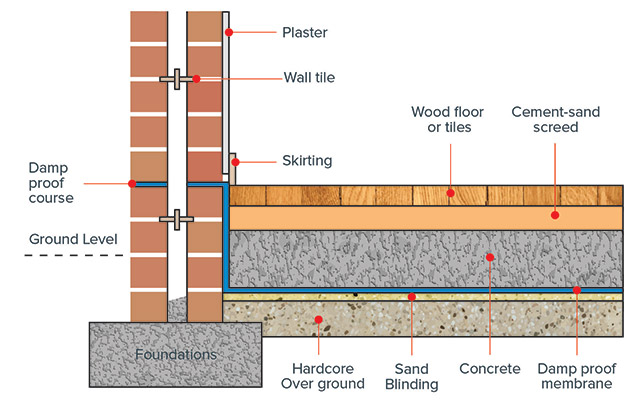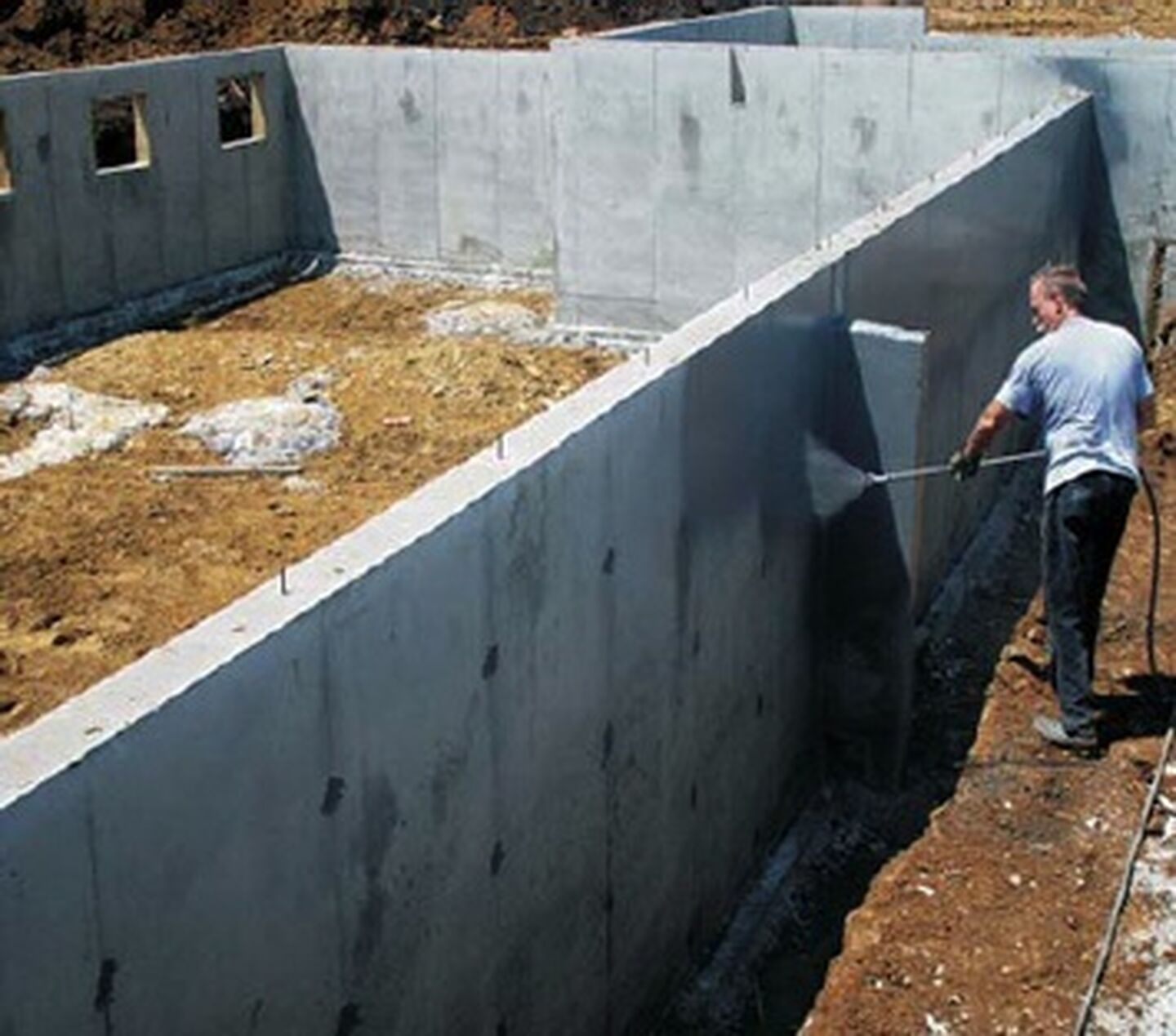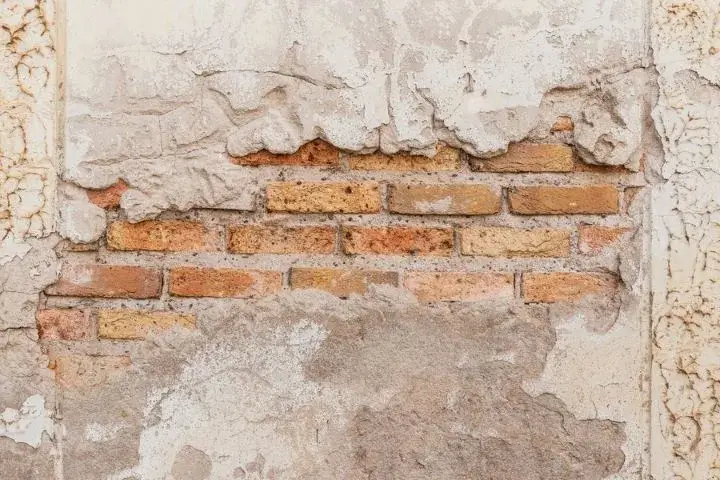Combat black mold effectively with mould removal newcastle solutions
Combat black mold effectively with mould removal newcastle solutions
Blog Article
Discovering the Various Techniques and Solutions for Effective Damp Proofing
Moisture in buildings positions considerable difficulties to both structural honesty and interior air top quality. Different methods and options have actually arised to combat this pervasive problem. From standard damp-proof membrane layers to cutting-edge chemical treatments, each method provides one-of-a-kind benefits. Comprehending these choices is crucial for effective dampness control. However, choosing the right solution relies on particular building problems and requirements, triggering additional exploration right into one of the most efficient damp proofing strategies readily available.
Understanding the Root Causes Of Wetness
Dampness can develop from various sources, understanding these reasons is crucial for effective remediation. Generally, moisture stems from 3 primary sources: climbing moist, passing through moist, and condensation. Climbing moist occurs when groundwater travels upwards with permeable materials, such as block or stone, commonly because of an absence of a reliable obstacle (damp removal newcastle). Permeating moist is typically created by exterior elements, consisting of roofing leakages, faulty seamless gutters, or damaged wall surfaces, allowing water to infiltrate a residential or commercial property. Condensation, on the various other hand, results from excess dampness in the air, usually intensified by poor ventilation and temperature level distinctions, resulting in water droplets basing on surface areas. Identifying these underlying concerns is important, as each kind of wetness requires a tailored approach for removal. Correct assessment helps in figuring out one of the most effective solutions, eventually safeguarding the structural integrity of a building and improving interior air top quality
Traditional Damp-Proof Membranes

Chemical Damp-Proofing Solutions
Chemical damp-proofing solutions offer an innovative approach to avoid moisture intrusion in structures. These techniques commonly entail the application of fluid chemicals that permeate masonry and form an obstacle versus increasing damp. Typically used chemicals include silanes, siloxanes, and various other water-repellent agents that react with surface area products to create a hydrophobic layer.The application process normally calls for boring holes right into the wall surfaces, injecting the chemical solution, and permitting it to treat. This method is particularly advantageous for older frameworks where standard damp-proof membranes might be impractical. Furthermore, chemical damp-proofing can be much less disruptive and more cost-effective than extensive renovation projects.While effective, these services rely on appropriate application and ecological conditions for peak efficiency. Normal maintenance and surveillance are necessary to assure the durability of the damp-proofing therapy. In general, chemical damp-proofing stands for a versatile alternative for safeguarding buildings versus moisture-related damage
Tooth Cavity Wall Surface Construction Methods
Cavity wall building strategies provide many benefits, particularly in moisture control and power performance. By incorporating an air space between two layers of masonry, these walls efficiently minimize water ingress while enhancing insulation. This combination not only secures structures from dampness however also adds to lowered energy intake.
Benefits of Dental Caries Walls
When thinking about reliable wet proofing approaches, the benefits of dental caries wall surfaces stand out prominently. Cavity walls contain two separate layers, creating an air gap that successfully minimizes dampness infiltration. This style lessens the threat of moisture, as the external wall functions as a barrier against rain and water ingress. Additionally, dental caries wall surfaces boost thermal insulation, which adds to power performance by reducing heat loss. They likewise supply sound insulation, helping to create a quieter interior setting. Additionally, the air space permits ventilation, which assists in dampness control and minimizes the possibility of mold and mildew growth. These benefits not just enhance the overall convenience of a building yet likewise contribute to its long life and structural honesty.
Wetness Control Techniques
Efficient wetness control strategies are vital in tooth cavity wall building to guarantee long-term defense versus wetness. One main approach involves the consolidation of weep openings, which facilitate water drainage from the tooth cavity, protecting against accumulation. Furthermore, the usage of breathable membranes can aid handle dampness levels while allowing caught vapor to run away. Proper placement of insulation is additionally crucial, as it should not obstruct drain courses. Ensuring that the outer leaves of the cavity wall are constructed with water-resistant materials improves overall longevity. Normal maintenance checks are essential to recognize any kind of clogs or damages early, securing the framework's honesty. Ultimately, a combination of these methods develops a robust protection versus moisture breach in dental caries wall surfaces.
Insulation and Power Efficiency
Insulation plays an essential duty in boosting power effectiveness within cavity wall surface building and construction. By including protecting products, these wall surfaces produce a thermal barrier that reduces heat loss and lowers energy consumption. Effective insulation not just assists keep a secure interior temperature however additionally mitigates the risk of moisture, as it stops condensation within the wall surface tooth cavity. Numerous methods, such as using stiff foam boards or mineral woollen, can be employed to achieve perfect insulation efficiency. Additionally, correct installment is important to assure that spaces and gaps are decreased, which can otherwise endanger energy performance. Eventually, a well-insulated dental caries wall surface contributes substantially to general sustainability and decreases heating & cooling costs for home owners.
Outside Damp Proofing Approaches
External moist proofing approaches are vital for safeguarding structures from moisture seepage. Two effective strategies include the application of water resistant membrane layers and the setup of French drains pipes. These services aid reduce water buildup and preserve the stability of buildings.
Waterproof Membrane Application
While various methods exist for avoiding wetness ingress, the application of water-proof membrane layers stays read more a highly efficient exterior moist proofing technique. These membranes are generally made from materials such as polyethylene, rubber, or changed bitumen, giving a robust barrier against water infiltration. The installment process involves applying the membrane layer to the external surface areas of walls or foundations, making certain full coverage to stop leaks. Proper bond and sealing at joints are essential to making best use of performance. Water-proof membrane layers can be applied in different types, consisting of liquid finishings and sheet membrane layers, enabling adaptability based on the specific requirements of the framework. This technique not just shields structures from moisture but also enhances their long life and architectural stability.
French Drainpipe Setup
One reliable approach for taking care of groundwater and protecting against dampness buildup around a building's foundation is the installment of a French drainpipe. This drain system consists of a trench filled with crushed rock and a perforated pipeline that reroutes surface water far from the structure. Correct setup calls for cautious planning, ensuring that the drainpipe slopes far from the structure to promote ideal water circulation. Furthermore, the location of the drainpipe is important; it should be placed in areas vulnerable to pooling or excess dampness. Normal maintenance, including cleaning debris from the crushed rock and guaranteeing the pipeline stays unobstructed, is essential for long-lasting effectiveness. Inevitably, a well-installed French drainpipe can greatly lower the danger of water-related issues in cellars and foundations.
Inside Waterproofing Techniques
Interior waterproofing approaches are important for protecting a building's inside from moisture seepage and possible water damage. These approaches usually entail the application of specific products and strategies developed to produce a moisture barrier within the structure. One usual approach is using waterproof finishes or sealers on walls and floors, which stop dampness from passing through surfaces.Additionally, mounting indoor drainage systems, such as sump pumps, can successfully manage water buildup in basements and creep areas. One more technique entails making use of vapor barriers, which are set up to prevent dampness movement from the ground into living spaces.Moreover, attending to any cracks or spaces in wall surfaces or structures with appropriate sealants ensures a thorough defense versus water invasion. By applying these interior waterproofing techniques, homeowner can significantly minimize the threat of mold and mildew development, architectural damages, and various other moisture-related concerns. Correct implementation of these strategies is important for long-lasting security and building stability.
Routine Upkeep and Inspection Practices
Regular maintenance and inspection methods are essential for assuring the long-term effectiveness of moist proofing solutions in any type of structure. Routine checks enable building owners to determine early indications of wetness invasion, such as peeling off paint, mold growth, and musty odors. These indicators can indicate underlying problems that require instant attention.Inspections ought to be conducted at the very least yearly, concentrating on prone locations like basements, creep areas, and exterior wall surfaces. During these analyses, property proprietors should check out sealers, drainage systems, and air flow to confirm they function correctly.Additionally, keeping rain gutters and downspouts is essential, as clogged up systems can cause water accumulation near the structure. Carrying out a routine upkeep schedule, together with prompt repair work, can substantially expand the life expectancy of wet proofing steps and shield the structural stability of the structure. Proactive steps inevitably add to the overall health and safety and security of the living atmosphere.
Regularly Asked Concerns
How Much Time Does Damp Proofing Commonly Last?
The duration of damp proofing efficiency varies, typically lasting in between 20 to half a century. Elements such as application high quality, ecological conditions, and maintenance practices significantly affect the durability of the wet proofing therapy.

Can I Damp Evidence My Home Myself?
The private contemplated the feasibility of do it yourself damp proofing. With appropriate research study and the right products, it is feasible. Nevertheless, they also identified the value of professional guidance to assure resilient effectiveness and protect against future problems.
What Are the Signs of Ineffective Damp Proofing?
Indications of inefficient moist proofing consist of persistent moldy odors, visible mold and mildew development, peeling paint, wet patches on wall surfaces, and wood degeneration - damp proofing newcastle. Home owners ought to resolve these issues without delay to avoid more damage and wellness concerns
Does Damp Proofing Affect Indoor Air High Quality?

Exactly How Much Does Professional Damp Proofing Cost?
Expert moist proofing prices vary substantially, typically ranging from $1,000 to $5,000 depending upon the residential or commercial property's size, the extent of the moist problem, and chosen techniques. Each situation needs a customized analysis for accurate pricing. Typically, moisture stems from 3 key resources: rising damp, penetrating damp, and condensation. When taking into consideration reliable wet proofing methods, the advantages of cavity walls stand out prominently. External damp proofing methods are important for securing structures from wetness infiltration. While different techniques exist for protecting against moisture access, the application of water-proof membrane layers continues to be a very reliable outside moist proofing method. Indications of inefficient moist proofing consist of relentless moldy smells, noticeable mold and mildew growth, peeling paint, moist patches on walls, and timber degeneration.
Report this page